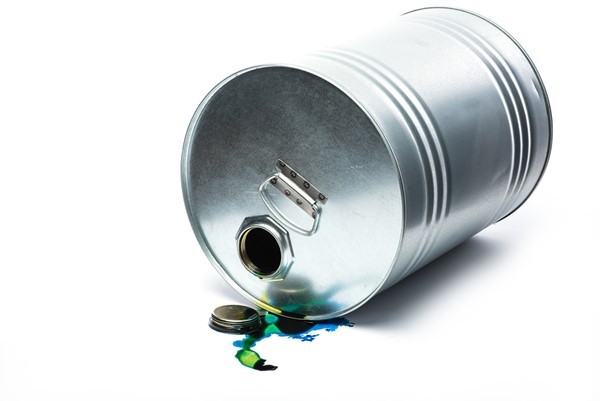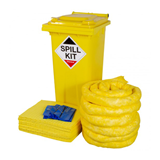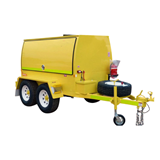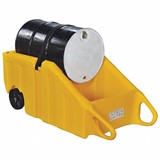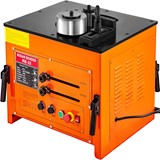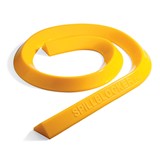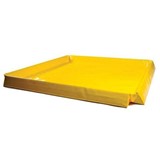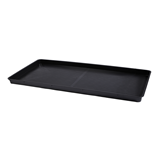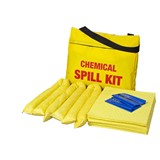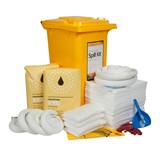Chemical transport, manufacturing, liquid storage and handling, can often lead to leaks and spills. Since accidents can be of various types and tend just to happen you should always be prepared to react in order to be safe and avoid injuries or environmental damage.
Knowing your chemical substances
The first step is to learn what you have at hand in order to deal with it. Depending on the chemicals or liquid within the facility, people should be informed on how to proceed.
There are 3 basic types of liquid substances:
- Hydrocarbons - Examples: Fuels and Oils
- Non-aggressive Chemicals - Examples: Coolants, Agricultural Chemicals, Inks & Dyes, Water Based Fluids
- Aggressive Chemicals - Examples: Ethanol, Pool Chlorine, Hydrochloric Acid
According to the type, all containers should be properly identified (complying with the Work Health and Safety Regulations) and labeled correctly. Being a low or high-risk substance will determine the amount of training required by the personnel to intervene properly in the situation.
The Australian Government regulates the supply and use of chemicals dividing them into four categories:
- Industrial chemicals, including cosmetics and chemicals in domestic products —National Industrial Chemicals Notification and Assessment Scheme (NICNAS)
- Agricultural and veterinary chemicals—Australian Pesticides and Veterinary Medicines Authority (APVMA)
- Medicines and pharmaceuticals—Therapeutic Goods Administration (TGA)
- Chemicals used in or with food, including additives, contaminants and natural toxicants—Food Standards Australia New Zealand (FSANZ)
If new to a specific industrial chemical, some information can be found in the NICNAS’ chemical fact sheets. Further investigation should be done if needed. NICNAS, for instance, also provides you with proper training for those who are new to the Australian chemical regulatory process.
Kind of spills
According to the kind of substance and the amount of spillage it will be classified under 2 categories: major or minor spills. Generally speaking spills under 200 liters would be considered as minor, yet the following should be taken into consideration when any of the following apply. You can always determine what works better for your workplace and modify these criteria according to your needs and actual experience:
1. Major spill
- Persons involved and/or material spilled unknown
- Material spilled is highly toxic, therefore requires advanced protective equipment
- Large or uncertain quantity spilled
- Significant fire hazard present
- The material has the potential to reach the environment
2. Minor spill
- Responsible party is at the scene
- Material spilled is known
- Material spilled is not highly toxic, therefore other than gloves and a half-face respirator are not required.
- Small quantity spilled
- No fire hazard
- The material has little or no potential to reach the environment
The substance will determine the protective wear needed and the suppression gear for the material containment, while the amount of the spillage will determine the number of people needed and the complexity for the procedure to follow.
Spill containment requirements as an informed and preventive measurement
In order to prevent or minimize the impact of a spill, risk assessment must be carried out in order to evaluate possible situations where a leak or a spill may occur. This will allow for workers to be well-prepared and have a specific plan they can follow according to the particular circumstances they could be facing.
Risk Assessment Process
As a simultaneous approach, once potential spillage situations have been identified,secondary containment should be implemented to reduce the possibility of spillages. There is no better situation than a foreseen setting where workers can rapidly control leaks or spills. It is better to know how to react rather than reacting without any knowledge at hand.
Spill Response: HAVE A PLAN!
When the inevitable happens and a spill occurs, it's important to have a plan. This could look something like:
- Identify the kind of spill (major or minor).
- Isolate the area concerned if appropriate, according to the substance type (refer to labeling and Safety Data Sheet.
- Consider worker safety - If needed, as part of your emergency plan, evacuation procedures must also be set in place and proper training should be given to all workers beforehand. Example: People with disabilities require inclusive evacuation procedures.
- Wear appropriate protective gear. Advanced gear should be properly used by workers, so training for its usage is also required.
- Control the source of the spill. Take immediate steps to stop the leakage and/or control the spill. For instance, put small leaking containers into larger containers or bins to prevent further release of the chemical or close flow valves where needed.
- Contain the spill by doing everything you can to contain the spilled material in the smallest area possible to keep it from spreading. Liquid spills can often be contained by spreading absorbent materials such as fine sand, vermiculite, clay or pet litter over the whole spill. No matter how small the spill, it is important to stop it flowing into a body of water or soil.
- Contact the corresponding authorities if appropriate. The fire brigade must be contacted in cases where a spill has entered drains or watercourses, could harm the environment, or pose a threat to public safety.
- Clean up the spill. In general, according to the situation, you can spread absorbent material over the contaminated area. Place this material in a drum or other suitable container lined with a heavy duty plastic bag. There are also different spill kits available according to the specific substances to be dealt with. Depending on the case, the way you handle the spill may vary, so make sure your procedure applies to the substances being handled. (Example: Pesticides).
- Document the incident – Follow your workplace’s procedures on how to document these kinds of situations in order to evaluate and prevent them from happening again. Learn from the experience and never underestimate continuous improvement.
Spillage information relevant to Australia
Spillages can be fatal and have serious consequences to our environment. Certain Australian associations help to inform people on spill management. See:
Always remember, to be prepared is to be safe. Don’t let spill situations become a hazard to people or the environment. It is up to each workplace to design and inform their teams of the right steps to follow. Be proactive, more than reactive!

